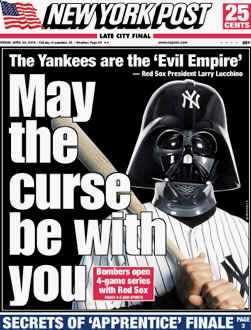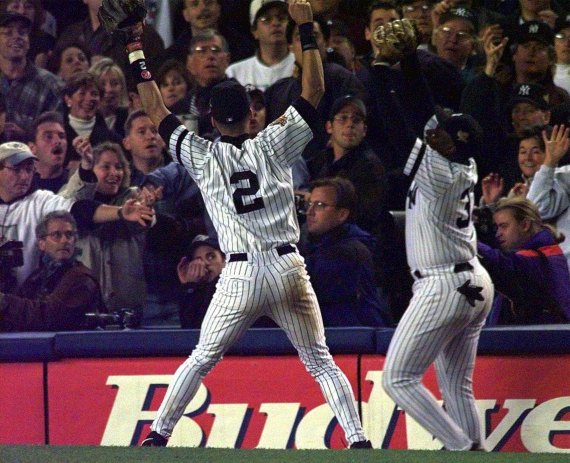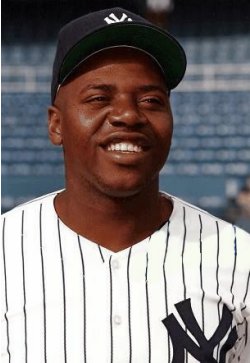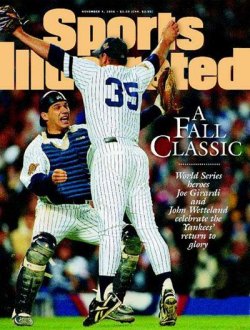 It’s easy to forget just how big Jose Contreras was in Cuba. He was the country’s undisputed ace in international play for nearly a decade, helping Cuba to the silver medal in the 2000 Olympics and gold is numerous other events. Contreras first popped up on the big league radar in March of 1999, when he struck out ten Orioles in eight shutout innings during an exhibition game in Havana. Later in the year he struck out 13 in eight innings on one day’s rest against Team USA in the Pan Am Games, the first time Team USA was allowed to use professional players.
It’s easy to forget just how big Jose Contreras was in Cuba. He was the country’s undisputed ace in international play for nearly a decade, helping Cuba to the silver medal in the 2000 Olympics and gold is numerous other events. Contreras first popped up on the big league radar in March of 1999, when he struck out ten Orioles in eight shutout innings during an exhibition game in Havana. Later in the year he struck out 13 in eight innings on one day’s rest against Team USA in the Pan Am Games, the first time Team USA was allowed to use professional players.
Contreras defected from Cuba in October of 2002 while in Mexico for a tournament, leaving his wife and young daughters behind. Contreras made his way to San Diego and eventually gained asylum in the United States, where he and agent Jaime Torres started fielding offers from Major League teams even though he wasn’t yet a free agent.
“Most of the organizations I thought were going to contact us have contacted us, and that includes the Yankees,” said Torres a little more than two weeks after the defection.
The Yankees needed to clear money to pursue their top two targets that offseason, Contreras and Hideki Matsui. They also wanted to re-sign Roger Clemens. Mike Stanton and Ramiro Mendoza were allowed to walk as free agents, and rumors circulated that they may trade Andy Pettitte and his $11.5M salary to free up more payroll room. Doubts about Contreras’ age persisted (he was listed at 31 at the time), but nonetheless the Red Sox and Mariners got heavily involved in the bidding. Contreras had been working out with Torres in Nicaragua that winter, and Boston went so far as to buy out every room of the hotel where he was staying.
“The Boss, that was something that was a one up on us when they did that, it was a shrewd move,” said Brian Cashman recently, “and [George Steinbrenner] was not going to be denied.”
“We were smoking cigars with Contreras and drinking rum until about 4 o’clock in the morning,” said then-Red Sox GM Theo Epstein recently. “He told us he always wanted to be a Red Sox, and then the next morning the Yankees offered him about $10 million more.”
The Yankees signed Contreras on Christmas Eve, giving him four years and $32M. Coincidentally, the contract became official on this date in 2003. Orlando Hernandez, who had spoken to Contreras by phone a few times after his defection, was traded to the Expos in January to further free up some money. Matsui had agreed to a deal a few weeks earlier, and Clemens would re-sign a few days later. The Yankees got all their men.
”The Evil Empire extends its tentacles even into Latin America,” said Red Sox president Larry Lucchino after news of the signing broke.
The Yankees and their fans have since embraced the Evil Empire moniker. The Imperial March — Darth Vader’s theme music in Star Wars — is a pregame staple at Yankee Stadium, and you can buy unlicensed Evil Empire merchandise right outside the Stadium on River Ave. Everyone knows the Yankees spend more money than every other team, and Lucchino gave us all something to rally around. No one tries to hide from the bloated payroll, which is something Lucchino’s Red Sox can certainly be accused of in recent years. We’ve embraced it.
Contreras’ contract drew the comment from Lucchino, but the Yankees have been operating this way for decades. They’ve always been in the hunt for big money free agents, always been at or near the top in payroll. It’s become the Yankee way, and they’ve been really successful going it. The Evil Empire crack did a fine job of relaying Lucchino’s frustration, but it’s also an acknowledgement of the team’s success and continues to be to this day.


